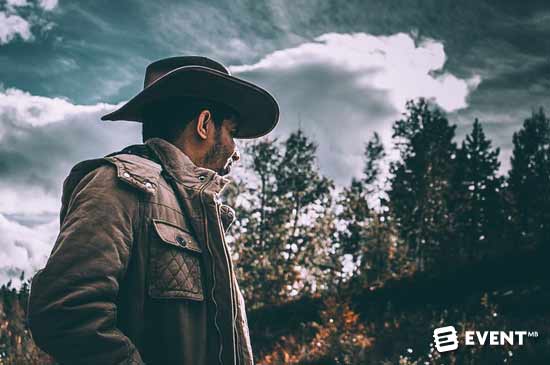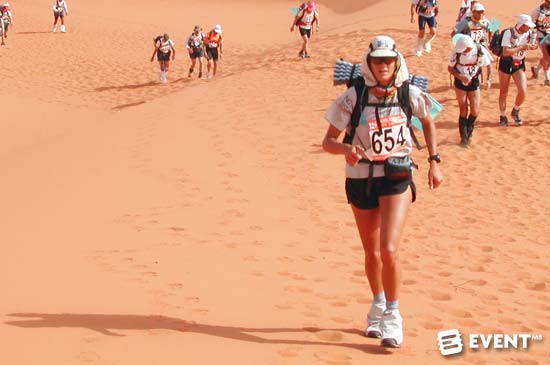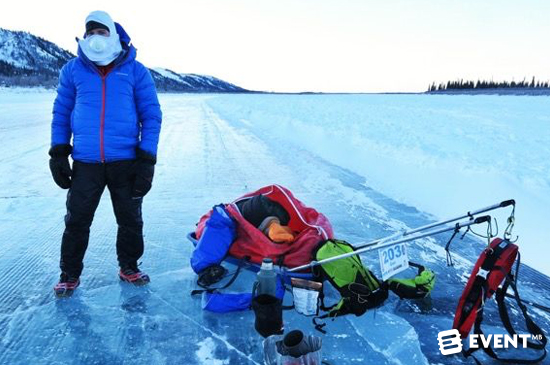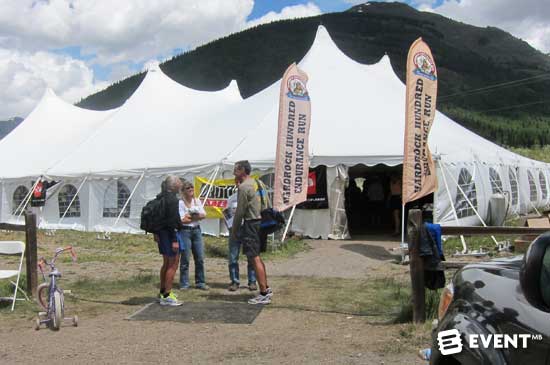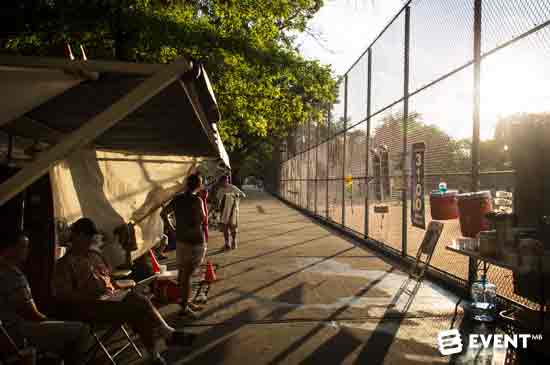Skift Take
Growing in popularity, with mysterious planning and organisation, the Barkley ultramarathon race defies event planning logic. We discuss how it has become one of the most notoriously brutal, yet coveted, ultra-races around, as well as other events which have a cult popularity.
The Barkley Marathons trail-race is a 100 mile ultramarathon held in the Frozen Head State Park in Wartburg Tennessee and is known as one of the hardest and unique foot races. With over 59,100 ft. of climb AND descent and an air of mystery and myth that only successful entrants will know, it’s considered so bad that if you get in, you get a condolence letter rather than congratulations. We take a look at the ins and outs of the Barkley Marathons, which has less than a 1% finish success rate, and the quirky event planning that goes into it.
History of the Barkley Marathons
The escape of Martin Luther King, Jr’s assassin, James Earl Ray in 1977 from Brushy Mountain State Penitentiary, was the inspiration of the Barkley Marathons as race director Gary Cantrell was underwhelmed by the little progress that James Ray made in his 55 hours of freedom by only covering 13km (8 miles). As an avid runner, Cantrell thought he could do at least 100 miles in that time and thus the Barkley Marathons was born, having been named after his old friend, Barry Barkley who was enthusiastic about running.
Drawing From A Hat
The pain of this ultramarathon starts at the tricky entry process because there is no race website, friendly reminder or social media promotion, race organizer Gary Cantrell has the philosophy that “if they are meant to get here, they will get here.”
The entrance details, date and time are a closely guarded secret and with only 40 spaces available and over 10 applicants per space, you need to prove your worth. Part of the process involves writing an essay on “Why I Should Be Allowed to Run in the Barkley” upon entry (once you have figured it out).
Even this is still no guarantee of entry as all names are pooled at the end of the entry process and drawn from a hat, although there are additional chances for certain criteria such as;
- A clever essay
- Previous Barkley experience – including finishers and completed loops
- Elite qualifications
- Race contributions
- Previous competitors not making it in other years
These add additional chances by adding their name several times to the hat, but ultimately if you aren’t drawn out, you aren’t in the race. This is the same traditional method that has been used since the start. Not using technology and relying on the luck of the draw means that although the entrant list is exclusive, it is not solely reserved for the elite. In other words, if you are persistent enough, you will get the opportunity to take part.
*A small amount of slots are also reserved for overseas runners who can request a month in advance due to the difficulty of making travel arrangements and obtaining Visa’s, which are also on a first come, first served capacity.*
Quirky Fees
Applicants also need to pay a $1.60 application fee regardless of whether they get in or not but accepted runners will have to pay an additional fee as stands:
- First timers (virgins) – a home state or country license plate
- Veterans (failed attempts) – a pair of gold-toe dress socks in black or dark blue, or in previous years it has been a flannel shirt.
- Alumni (any of the 14 successful runners who have completed the course) – a pack of regular camel filter cigarettes.
All of which must be submitted through the mail prior to the event, except for alumni who can bring theirs along on the day.
(No) Organisation
If you want a start time for this race to mentally prepare you are sorely out of luck as it is at the whim of Cantrell and could be anytime between midnight and noon on race day (which you will only find out after being accepting and completing your entry form). The only warning is an hour before the race signaled by the blowing of a conch (yes you read that correctly). The race itself is started by the lighting of a cigarette by Cantrell himself to signal it has begun.
There are no aid stations or medical staff for this event either, GPS’ are forbidden, as is receiving assistance while on the course, and runners must carry all clothing and food they might need for each loop by themselves. Cantrell tends to drop jugs of water in two areas but that is all the help and assistance that runners can expect to get.
The Course
Runners must purchase their own route maps and copy Cantrell’s course onto them although they will be given printed directions, which can be even harder to follow. The course is tweaked every year to keep runners on their toes and must be completed within 60 hours. Essentially it comprises of 5 x 20 mile loops and each loop is to be completed within 12 hours, which is where it gets its name “marathons” rather than marathon. The 60 mile “fun run” which is completed alongside the ultra must be completed in 40 hours or around 13 hours per loop.
In order to prove runners have completed each loop, since there are no marshals, they must find between 9-11 books on the course (depending on the year) and rip out the page corresponding to your race number (which changes every loop) and return them all at the end of your loop. Plus, with names such as “testicle spectacle”, “Meth Lab Hill”, “Rat Jaw” and “Checkmate Hill” you are in for one hell of a ride.
The “Winners”
After all of this, if you become one of the illusive elite who manages to succeed and finish the course, your prize is a chair brought to you at the finish line and the joy of being able to stop running as others listen on in awe of how you did it, no traditional race bling though!
The Documentary
It says a lot about an event when the documentary about it is entitled “The Barkley Marathons: The Race That Eats Its Young” and was released in 2014 following past finisher Brett Maune and John Fegyveresi on a journey that definitely shows what the race, pain and failure is all about.
It was a much contested subject as some of the veterans wanted to keep their Barkley secret while the younger generation wanted to show their exploits and get the event the recognition they felt it deserved. Some merely didn’t want the added competition of the extra entries but it’s safe to say with the entry process kept well under wraps and the sheer nature of the course, there aren’t going to be a sudden burst in numbers as it certainly isn’t for the faint of heart.
If you want to get your fix by watching, it is available to stream on Netflix in the USA and Canada and is available to buy through the Barkley Movie website.
The trailer gives an insight:
Stats And Facts
- The Barkley Marathons have only been successfully completed 16 times and only by 14 people
- The current record stands at 52:03:08 by Brett Maune
- In 2016 there was only one finisher – 3-time finisher Jared Campbell – in a time of 59:32
- Although it started in 1986, no one finished until 1989 (and that was the original 55 miles distance). No one completed the 100 mile distance until 1995
- Experienced ultra runner Dan Balione became so lost in 2006 he wandered for 32 hours before returning but only covered two miles of the course itself.
- Cantrell has been offered up to $1,000 to let entrants into the race and sell spaces but has refused all claiming that the Barkley cannot be bought.
5 Other Hardcore Ultra Races
Even if you are not quite ready for the Barkley Marathons, there are some other gruelling events you could try such as:
This 170 mile, self-supported route starts from the Grand Canyon north rim and finishes on the Grand Staircase summit. Showcasing over 19,000 ft. of climb and elevation, with the desert spanning between them, it is a remote race. Definitely a tricky one for those looking to battle the natural geological formations and tough temperatures during the 6 stage, 7 day event in September.
Taking place in one of the hottest places within the US during July, one of the hottest months and running from the lowest elevation of 85m below sea level to the summit of Mt. Whitney. This 135 miler through Death Valley covers three different mountain ranges and usually takes place between 10-12th July.
At the other end of the spectrum is this non-stop 120 mile race around March in the arctic temperatures of the Yukon in Canada where a mere 11 people have finished in its 9 years completed so far. Participants must drag their gear on sleds behind them in crawl-worthy winds and sub-zero temperatures and many drop out due to the psychological difficulty of crossing the seemingly endless crossings and plains.
With 33,050 ft. of climb and descent this 100 mile foot race held in the San Juan Range in southern Colorado in July must be completed within 48-hours. This may sound like an easy task but with the remoteness of the course combined with the altitude and steepness it can call upon a runner’s mountaineering and wilderness skills as well as their physical and mental strength.
This is the longest certified footrace and provides new challenges aside from the distance. It requires doing short loops of a single course, which can be monotonous and cause havoc on a runner’s mental capabilities. Runners must average 60 miles per day for 52 days straight to reach the target goal in an 18-hour per day format that starts at 6am every day and defeats some of the most seasoned of runners.
In Conclusion
From an event planning standpoint the Barkley Marathons race shouldn’t succeed. With its lack of explanation, planning, constantly changing course on the whim of the race director, no definitive start time and difficult entry procedures, it seems that it should be doomed to failure. Its growing popularity, and the number of other hardcore endurance races appearing, shows a new type of racer who wants to beat the unbeatable. Perhaps it is because the competitors are all insane to even attempt it, or because there is something in the mountains that keeps calling them back, either way, it’s not the event planning that is keeping the Barkley brutal ultramarathon growing in popularity.
